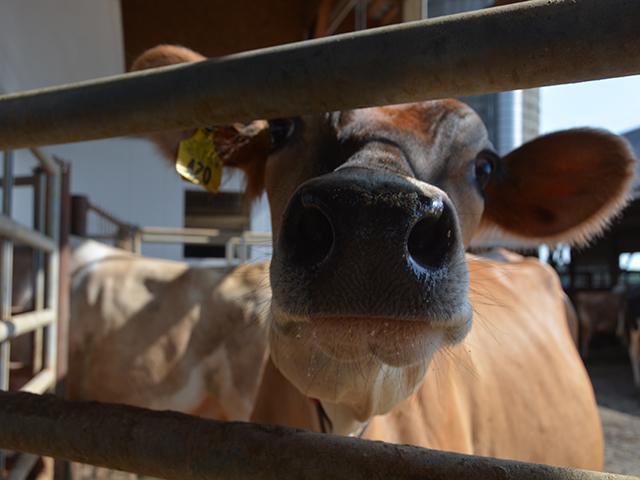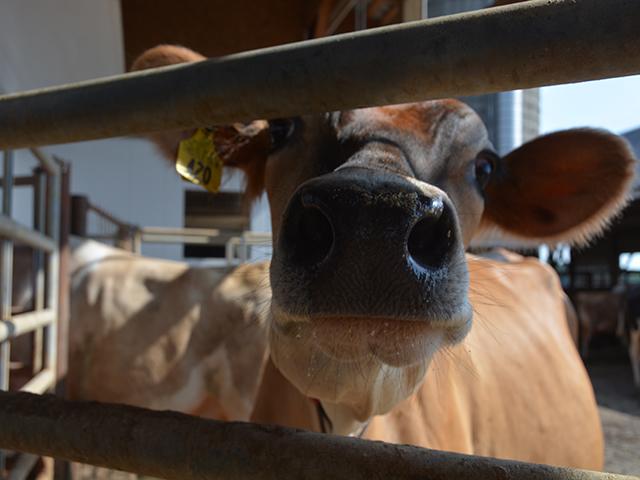Ag Policy Blog
California State Vet Calls for Avian Influenza Cattle Vaccine
WASHINGTON (DTN) -- The federal government should approve a vaccine against highly pathogenic avian influenza (HPAI) in dairy cattle, the California state veterinarian told a House Agriculture subcommittee hearing on the work of the National Animal Health Laboratory Network (NAHLN) on Tuesday.
"I believe we need dairy vaccination in the toolbox yesterday, especially for regions currently free from disease," Annette Jones, the California state veterinarian and director of Animal Health and Food Safety Services at the California Department of Food and Agriculture, testified before the House Agriculture Livestock, Dairy and Poultry Subcommittee.
"If I were a poultry producer, beef producer, swine producer, or dairy producer, I would be banging my fist on the table to vaccinate dairy cattle way ahead of poultry," Jones added. "If USDA can successfully keep trade doors open when millions of dairy cows are actively infected with H5N1, I am confident that they can get the job done if we use vaccine selectively to protect these girls."
In her submitted testimony, Jones also noted that "of the 17 states with known infected dairy cows, 12 have experienced poultry cases directly from these herds." She also noted that the current HPAI outbreak has cost USDA almost $2 billion. "Without early disease detection and accurate test results to make rapid decisions, the expense and the toll on animals and people would be much higher," Jones said.
USDA's website shows 1,075 dairy herds in 17 states have been infected with HPAI since spring of 2024. Still, the number of recent cases is waning with just two infected herds – one in California and one in Arizona – over the last month.
In his opening statement, Rep. Tracey Mann, R-Kan., said that the One Big Beautiful Bill Act had increased funding for the NAHLN network of more than 60 state and university laboratories around the country well as funding for the National Animal Disease Preparedness and Response Program and National Animal Vaccine and Veterinary Countermeasures Bank.
P[L1] D[0x0] M[300x250] OOP[F] ADUNIT[] T[]
Mann said, "The One Big Beautiful Bill included $233 million per year for the three-legged stool, with $10 million per year directed towards the NAHLN laboratories, which is on top of existing discretionary funding. This funding will increase diagnostic capabilities, improve research, assist in disease surveillance, and strengthen our overall capacity as a nation to prevent, detect, and mitigate foreign animal diseases."
Mann also talked about the economic devastation that could come if New World Screwworm were to show up in the U.S. Mann said if the screwworm were to arrive in the U.S. from Mexico it could cost livestock producers billions in economic losses. USDA has estimated an outbreak in Texas alone would cost producers $732 million per year, but expanding to the impact of cattle states it could translate into $10 billion a year in economic losses, Mann said.
Rep. Derrick Van Ordon, R-Wis., later expressed similar concerns, saying even the dairy industry in his state would be negatively impacted if the screwworm were to make it to Texas.
In his opening statement, Rep. Jim Costa, D-Calif., subcommittee ranking member, emphasized that the laboratory at the University of California, Davis, has played a critical role in combating HPAI. But Costa also noted that the Trump administration had fired a quarter of the employees in the laboratory central coordinating office. "This occurred in the middle of the prolonged Hi-Path Avian Influenza outbreak, and I cannot imagine a worse time to decide to cut positions that coordinate disease response. Think about it. We've seen uninformed and short-sighted decisions such as this one made across the government by this administration. We have already started to see how these decisions impact our ability to respond to disease, disaster, and other events that put communities in jeopardy."
The hearing also offered an opportunity for laboratory officials from Kansas, Iowa and Texas to talk about the work of their laboratories.
Jamie Retallick, director of the Kansas Veterinary Diagnostic Laboratory at Kansas State University, presented a map of the laboratories around the country. Retallick said that "weekly calls and annual meetings with NAHLN and the 64 state laboratories foster necessary communication and strong relationships across the network." As part of the network there are two federal parent laboratories -- the National Veterinary Service Laboratory (NVSL) in Ames, Iowa, and the Foreign Animal Diagnostic Disease Laboratory (FADDL) at Plum Island, N.Y. -- and the National Biodefense Agriculture Facility (NBAF) in Manhattan, Kan., Retallick said.
DTN Ag Policy Editor Chris Clayton contributed to this report.
To watch the full hearing, go to https://www.youtube.com/…
Jerry Hagstrom can be reached at jhagstrom@nationaljournal.com
Follow him on social platform X @hagstromreport
(c) Copyright 2025 DTN, LLC. All rights reserved.





Comments
To comment, please Log In or Join our Community .